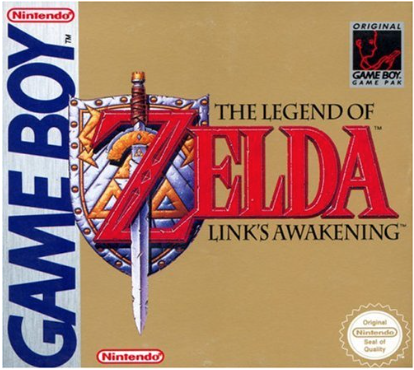What Can We Learn from Zelda? This Legend Has Secrets Up Her Sleeve!
Learn what a wonderful learning environment looks like by studying an old classic video game!
Now in the thralls of Summer activities, this month, we will kick into holiday mode and dream on through a bit of game development and how it ties into educational practice. Much to my content and perhaps through some of my influence, our department recently added The Legend of Zelda: Link’s Awakening to our video game library. As I write this, I am thoroughly enjoying my time on Koholint Island, the fictitious land in which the tale takes place. Originally released in 1993 for the Game Boy, the game has seen many remakes including for Nintendo’s most recent console, the Switch. I’m not only playing it because it’s a good game, but because of the history of its development. I want to experience the developer’s design process and learn from it.
Believe it or not, this game started off as a secret project within Nintendo. A group of colleagues banded together around a passion project and ended up creating one of the more novel entries in this fabled franchise – without initial input by Mr. Nintendo himself, Shigeru Miyamoto. So why is this important? The development of Link’s Awakening mirrors that of a successful learning environment which nurtures passion, agency, support, and skills.
Passion: The small group wanted to share their ideas and stories. As rumor has it, the lead on the project was heavily influenced by Twin Peaks (you can see why this is a must play title).
Educational tie-in: Everyone has a passion and we can know and name those if we listen.
Agency: As mentioned above, Mr. Miyamoto was not involved until further on in the development. Zelda faux-pas were not cast aside, but encouraged. In my most overworld travel to the next dungeon, I was leading a Mario Chomp chain. For those of you not in the know, in the past, you’d never mix IPs!
Educational tie-in: If you’ve been reading these blog posts in the past, it should be common knowledge as to how important choice and free-will is when it comes to promoting learning.
Support: After word got out there was something awesome happening, Nintendo higher ups gave it the green light as well as more resources to ensure the success of the project.
Educational tie-in: We as educators are presented with the same opportunities through our experiences and how we teach. We’re reminded to not be the dark sage on the stage, but rather the owl guide on the side.
Skills: Naturally there was talent aplenty in the development of Link’s Awakening, but the fact of the matter is that they had a lot to learn. They were trying to cram a full Zelda title onto a Game Boy. Educational tie-in: We’ll always need hard skills that we can learn to further allow us to pursue our dreams, or to create the dreams of a giant fish that millions can enjoy.
TLDR; The Legend of Zelda: Link’s Awakening, a 1993 Game Boy title that breaks narrative and cultural norms which was inspired by Twin Peaks is a masterclass in game design, because it was also a masterclass in developing an ideal learning environment. Passion, agency, support, and skill oozes from every pixel in this game.
Next Month, Digital Dragon’s Game Design Academy Camp will feature a history lesson in games – why not remind our learners where their current favorites developed from!?
Check out more Info on all Digital Dragon Camps!
About the Author:
John Balash was instrumental in Digital Dragon’s launch in 2013 as its first Curriculum Director and is now back in the fold as a consultant on all the latest and greatest in tech education.This is John’s latest contribution to a monthly blog series we’ve launched, Tech News from the Frontier. John is the Director of Educational Engagement at Carnegie Mellon University’s Entertainment Technology Center. John has worked on educationally-focused initiatives with clients ranging from D.A.R.P.A. to Disney. Working from both sides of the desk, you can find John in classrooms and conferences around the world exploring new uses for technologies in learning environments.


